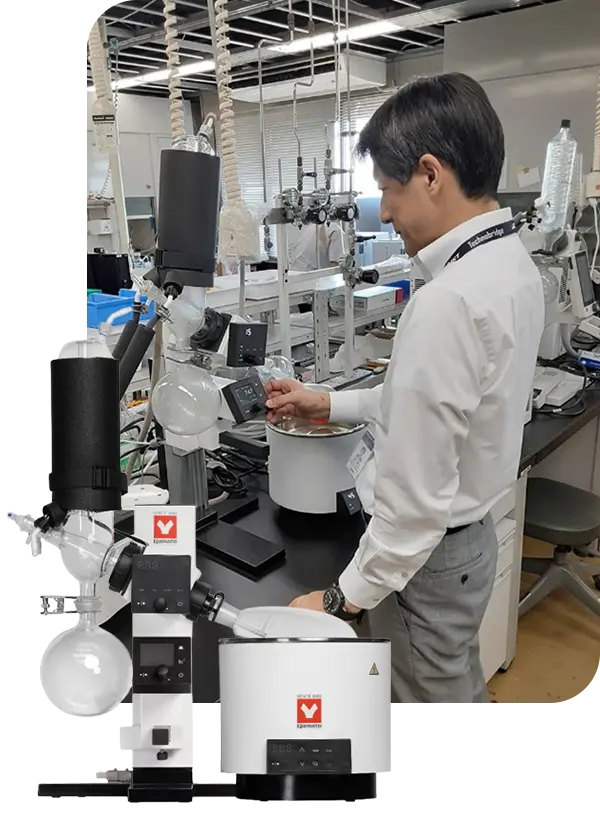Creating Encapsulated Pigment Beads
A rotary evaporation approach for cosmetics R&D that will speed up product development, reduce inherent risks in your process, and lead to better products.
You've developed a stunning new pigment dispersion - vibrant, light-catching, exactly the shade your formula needs. But now comes the real challenge: transforming that liquid suspension into solid, uniform micro-beads that won't clump, won't fade, and will deliver consistent color payoff every single time someone applies your product.
If you're working in cosmetics R&D, you know this transition from liquid to solid pigment form can make or break a product. The difference between a luxury eyeshadow that applies like silk and one that goes on patchy? Often, it's how the pigments were processed and encapsulated.
If you don’t want to learn about this, and you just want the rotary evaporator we built for this application, you can customize your cosmetics R&D rotary evaporator package in less than 20 seconds.
What Are Encapsulated Pigment Beads and Why Use Them?
Traditional loose pigments create headaches in cosmetic manufacturing. They're messy, they settle unpredictably, and getting consistent color distribution requires constant mixing and quality checks. Encapsulated pigment beads solve these problems while adding genuine value to the final product.
Think of pigment beads as tiny, uniform spheres where colorants are locked within a protective matrix. Unlike loose powders that float freely and create clouds of color, these beads:
Handle cleanly without pigment clouds contaminating workstations
Disperse uniformly through formulations without aggressive mixing
Protect sensitive pigments from oxidation and UV degradation
Maintain color vibrancy months after production
The uniform rotation and controlled drying of rotary evaporation create consistent bead quality that mechanical methods can't match. Each bead contains the same pigment concentration, eliminating the color streaking that plagues products made with poorly distributed loose pigments.
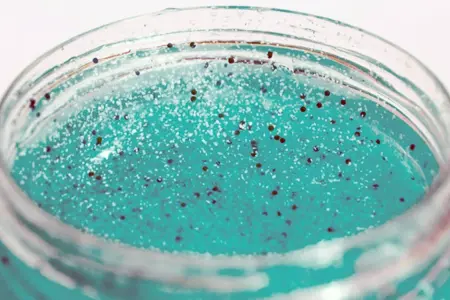
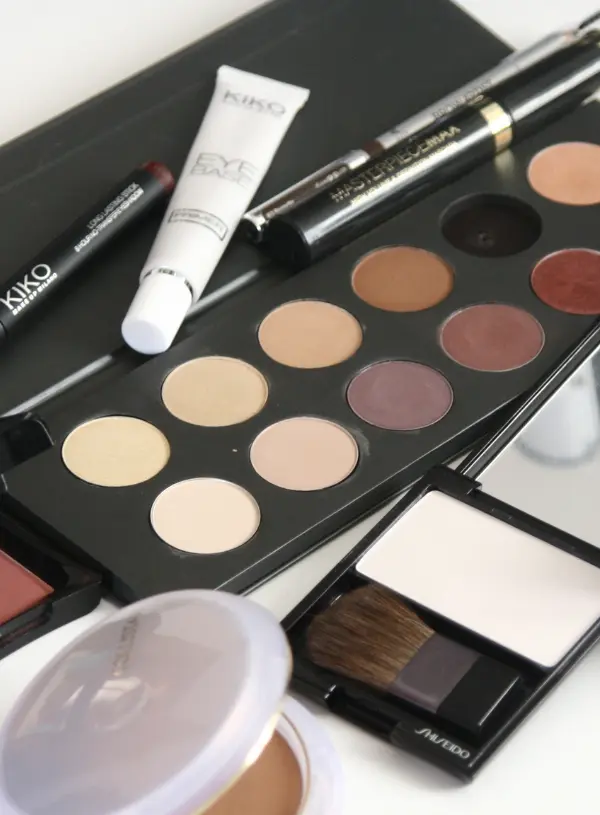
What Advantages Do Beads Have in Eyeshadow and Lip Products?
For eyeshadows, encapsulated beads create that coveted "buttery" texture consumers pay premium prices for. The spherical shape allows beads to glide across skin without the drag of angular particles. They pick up evenly on brushes and transfer consistently to the lid - no more complaints about shadows that swatch beautifully but apply poorly.
In lip products, beads solve the migration problem. Traditional pigments can bleed into lip lines, creating that dreaded feathering effect. Encapsulated beads stay where they're applied because the binder matrix controls release. They also improve wear time significantly - up to 6-8 hours compared to 2-3 hours for conventional formulations.
The aesthetic advantages extend beyond performance. Beads can create unique visual effects - imagine gold-encapsulated red pigments that reveal color complexity as they wear. For highlighters, controlled bead sizes deliver consistent luminosity without the harsh glitter chunks that scream "cheap" to discerning customers.
Precision vacuum during rotary evaporation preserves pigment brightness and integrity throughout this transformation, maintaining the exact shade you developed in the lab.
How Does Rotary Evaporation Create Pigment Beads?
Rotary evaporation offers something spray-drying and mechanical granulation can't: single-step concentration and bead formation with unprecedented control. Here's what actually happens inside the evaporator:
Your pigment suspension enters the rotating flask. As it spins, centrifugal force spreads the liquid into a thin film across the flask walls - typically 0.1 to 0.5mm thick. Under vacuum, the solvent evaporates at temperatures 20-40°C below its normal boiling point. This matters because many organic pigments start degrading at 60°C.
The continuous rotation prevents settling and ensures even pigment distribution. As solvent leaves, the remaining suspension reaches a critical concentration where surface tension and rotational forces cause spontaneous bead formation. These aren't random aggregates - they're uniform spheres shaped by physics.
Yamato's wide rotation speed control (5-315 rpm) directly influences bead size and uniformity. Slower speeds produce larger beads for shimmer effects. Faster rotation creates smaller beads for smooth finishes. You're not just removing solvent; you're engineering particle morphology.
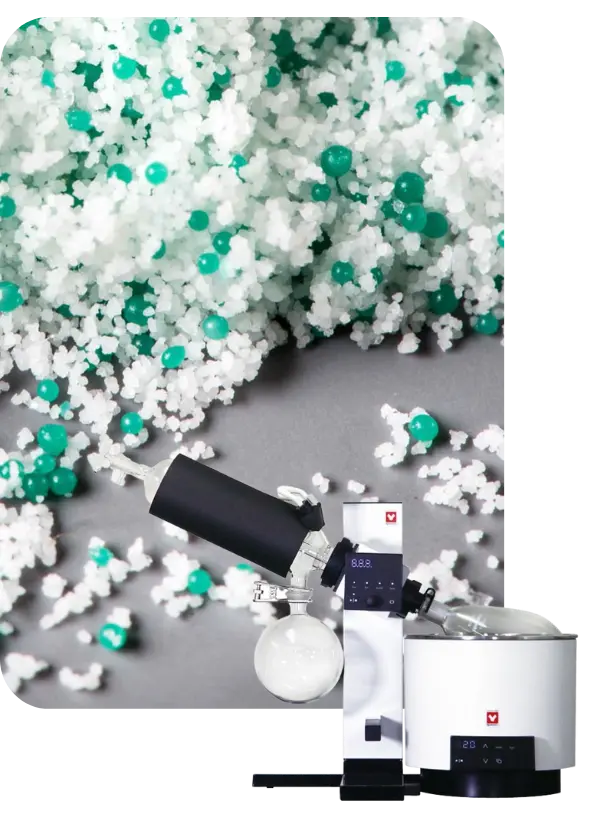
Why Is Temperature Control Important for Pigments?
Temperature isn't just a number on your SOP - it's the difference between vibrant colors and muddy disappointments. Common pigment degradation thresholds include:
For most probiotic formulations, aim for:
Iron oxide reds
shift toward brown at 70°C
Organic violets
fade to gray above 65°C
Ultramarine blue
turns greenish past 80°C
Carmine
muddy orange above 60°C
Phthalocyanine blues
crystal phase changes at 75°C
Thermal degradation happens faster than most formulators realize. Even five minutes at excessive temperature can permanently alter a pigment's crystal structure, changing how it reflects light. Once that happens, no amount of reformulation brings back the original shade.
Yamato's precise bath control keeps temperatures within ±0.5°C of your setpoint. This isn't overkill - it's insurance. When you're processing $500/kg specialty pigments, that precision prevents thermal fading and degradation that would otherwise force you to scrap entire batches.
The programmable controller stores temperature profiles for each pigment type. Your validated process for heat-sensitive carmines runs automatically at 45°C. Switch to iron oxides, and it adjusts to their 65°C optimum. No guessing, no accidents.
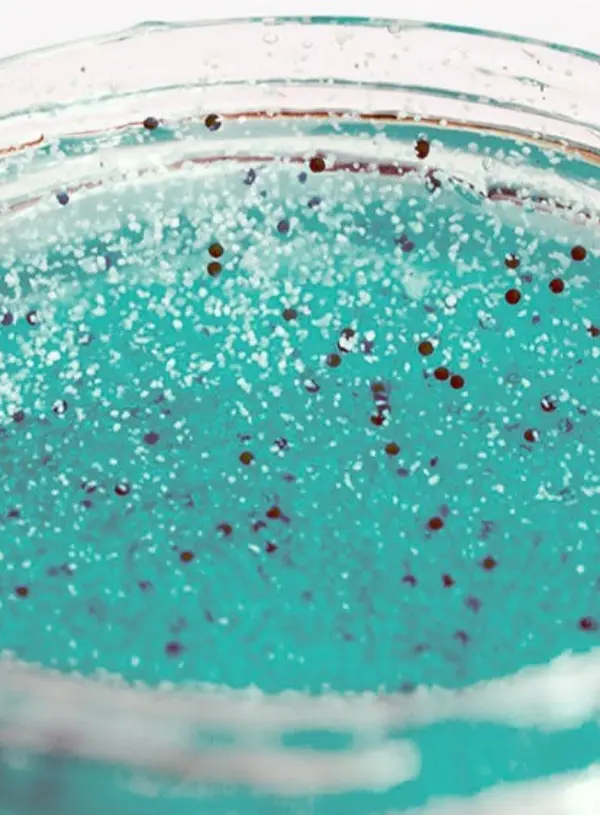
How Can Binders or Encapsulating Agents Enhance Bead Performance?
The right binder transforms good pigment beads into great ones. Hydroxypropyl cellulose creates firm beads with controlled release - perfect for long-wear formulations. Polyvinylpyrrolidone produces softer beads that blend seamlessly for buildable coverage. Shellac adds water resistance for pool-proof products.
These aren't afterthoughts added post-production. During rotary evaporation, binders integrate into the bead structure as solvents evaporate. The gentle process preserves binder functionality - no thermal crosslinking that would make beads too hard, no degradation that would compromise performance.
For texture modification, try adding 1-2% silicone resin during evaporation. It creates a slip agent effect that makes beads feel luxurious on skin. For stability enhancement, vitamin E works double duty - antioxidant protection plus skin benefits. The controlled evaporation ensures even distribution throughout each bead.
What Particle Sizes Are Ideal for Different Cosmetic Products?
Size matters differently across product categories. Lipsticks need 10-30 micron beads - small enough to create smooth application but large enough to provide coverage. Go smaller and you get transparency. Go larger and users feel grit.
Eyeshadows have more flexibility:
Matte finish
20-40 micron beads that pack tightly for intense color
Shimmer formulas
40-100 micron beads that catch and reflect light
"Foiled" effects
80-120 micron beads with metallic pigments
Duochrome finishes
60-100 micron beads for optimal color shift
Foundations demand the tightest control - 15-25 microns consistently. Any variation shows as streaking or patchiness. Speed and vacuum tuning with Yamato's controls allow you to hit these targets reproducibly. Start at 60 rpm for larger beads, increase to 150 rpm for smaller ones. It's that straightforward.
Can Multiple Pigments Be Blended Into One Bead?
Multi-pigment beads open doors to effects impossible with traditional mixing. Blend gold and pink interference pigments into single beads for true duochrome effects. Combine matte and shimmer pigments for complex finishes that shift with viewing angle.
The key is pre-blending pigments in your dispersion phase at the exact ratio you want in final beads. A 60:40 gold-to-pink ratio in the suspension becomes a 60:40 ratio in every single bead. Uniform rotation ensures even distribution - no separation, no settling, no surprise color variations.
For color-shift effects, layer different interference pigments with complementary absorption spectra. The beads appear one color in direct light, another in indirect light. This isn't possible with post-production mixing where pigments remain separate particles.
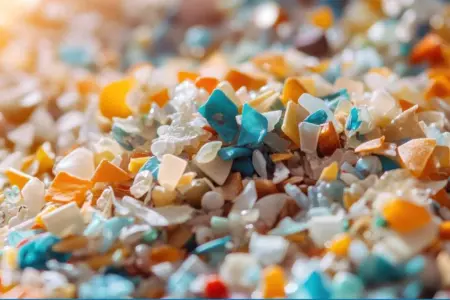

How Does Solvent Choice Affect Bead Formation?
Your solvent determines everything from evaporation rate to final bead structure. Ethanol evaporates quickly under vacuum, producing dense beads ideal for pressed powders. Isopropanol takes longer but creates more porous beads that blend more easily.
Water-based systems need different parameters entirely. They require higher bath temperatures (55-60°C versus 40-45°C for alcohols) and longer processing times. But they're essential for certain hydrophilic pigments that won't disperse in organic solvents.
Mixed solvent systems offer the most control. Start with 70:30 ethanol:water for broad compatibility. The ethanol ensures quick initial evaporation while water provides structure during bead formation. Yamato's chemical-resistant design handles these diverse solvents without degradation or contamination.
How Can You Preserve Pigment Brightness During Processing?
Brightness loss usually traces back to three culprits: oxidation, excessive heat, or crystal structure changes. The vacuum environment addresses the first by reducing oxygen exposure to near zero. Lower pressures mean less oxygen to react with sensitive organic pigments.
For light-sensitive pigments, amber glassware isn't just recommended - it's essential. Photodegradation can occur even during the 45-60 minute processing time. Some formulators go further, processing light-sensitive materials under yellow lighting to eliminate blue wavelengths entirely.
Crystal structure preservation requires matching processing conditions to pigment chemistry. Phthalocyanines need gradual vacuum application to prevent phase transitions. Pearl pigments require minimal mechanical stress to maintain their layered structure. The programmable controls let you create custom protocols for each pigment class.

Can Active Skincare Ingredients Be Included in Pigment Beads?
Multifunctional makeup is cosmetics' fastest-growing segment. Consumers want color plus benefits - anti-aging, hydration, sun protection. Encapsulated beads can deliver both, but only if processing preserves active ingredient potency.
Stability results with gentle rotary evaporation:
Vitamin C
maintains 85-90% activity after six months (processed at 40°C under vacuum)
Hyaluronic acid
retains moisture-binding capacity without depolymerization
Peptides
preserve structure with bath temps below 45°C and stepwise vacuum reduction
Niacinamide
95% retention when processed below 50°C
Vitamin E
actually stabilizes better within beads than in traditional formulations
Peptides require extra care. Keep bath temperatures below 45°C and use stepwise vacuum reduction to prevent denaturation. Add 2-3% trehalose as a protective agent. The result: beads that deliver both instant color and long-term skin benefits.
What Are the Alternatives to Rotary Evaporation?
Spray-drying remains the industry standard for high-volume production, and it's unbeatable for speed - converting liquid to powder in seconds. But those seconds involve inlet temperatures of 150-200°C. Even with cooler outlet temperatures, that initial heat shock can permanently alter organic pigments. Reds turn orange, blues shift green, and forget about preserving any heat-sensitive actives.

Mechanical granulation and extrusion work well for robust mineral pigments. But run pearlescent micas through an extruder and you'll destroy the platelets that create their shimmer. The physical stress breaks down the delicate structures that make premium pigments worth their price.
Freeze-drying preserves everything - color, structure, actives - but takes 24-48 hours per batch and requires expensive equipment. It's overkill for most cosmetic applications where moderate temperatures work fine.
Manual pelletizing? Fine for color matching, but the batch-to-batch variation makes it unsuitable for anything beyond initial prototyping. You can't build a product line on a process that depends entirely on operator technique.
Rotary evaporation hits the sweet spot: gentle enough to preserve quality, controlled enough for reproducibility, fast enough for practical R&D cycles. When your eyeshadow palette retails for $80, you need processing that justifies the price point.
How Scalable Is This Process from R&D to Production?
The beauty of rotary evaporation lies in predictable scale-up. The physics remain constant whether you're processing 100mL or 10L. Double the batch size, double the flask size, maintain the same fill ratio (typically 30-40% of flask volume), and your results transfer directly.
Your programmable methods become invaluable during scale-up. The exact temperature ramps, vacuum progressions, and rotation speeds that work at bench scale translate to pilot equipment. No guesswork, no lengthy revalidation.
Document everything during development: evaporation rates, temperature profiles, visual endpoints. These become your scale-up roadmap. When production asks "can we make 10kg?", you'll have data showing exactly which parameters to maintain and which equipment specifications to match.
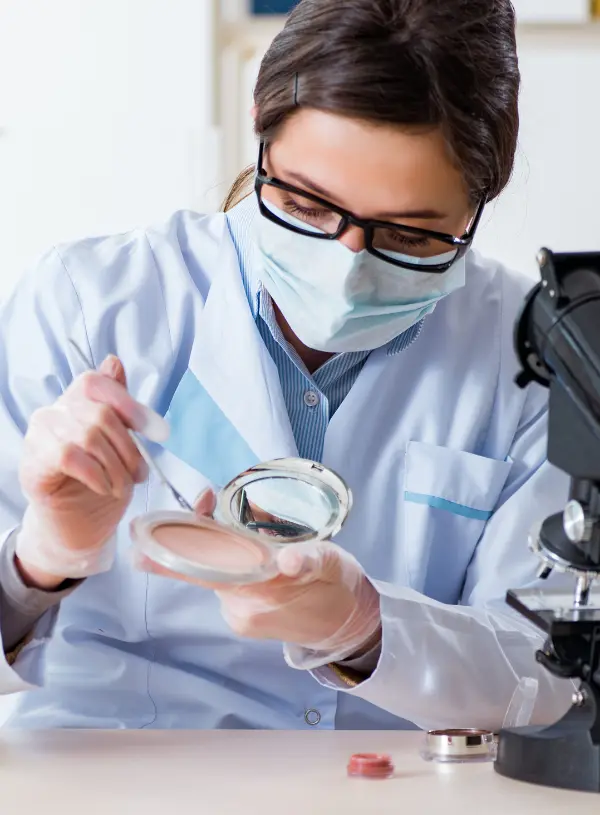
What Troubleshooting Steps Help If Beads Clump or Break?
Clumping usually signals excess moisture or insufficient binder. First, check your endpoint - beads should contain less than 1% residual solvent by Karl Fischer titration. If moisture is within spec, increase binder concentration by 0.5% increments. Adding 1-2% hydrophobic silica during final drying also prevents moisture-induced aggregation.
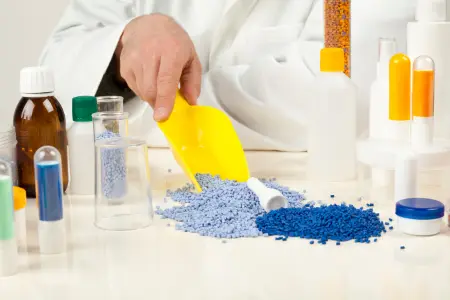
Breaking indicates structural weakness from incomplete binder integration or over-drying. Reduce final vacuum pressure to leave 0.5-1% residual solvent - this plasticizes the binder matrix. If beads remain brittle, switch to a more flexible binder like ethylcellulose or add 1-2% plasticizer.
Size variation often traces to inconsistent rotation or suspension viscosity. Verify rotation stability - fluctuations over ±5 rpm cause broad size distributions. Check suspension viscosity before processing; it should fall between 500-2000 cP. Too thin produces dust, too thick creates chunks.
Mid-run adjustments are possible with Yamato's controls. Notice beads getting too large? Increase rotation speed by 10-20 rpm. Color looking dull? Drop bath temperature 5°C. This real-time optimization saves batches that would otherwise fail.
Why Does This Matter for Cosmetic Innovators?
Encapsulated pigment beads aren't just about making production easier - they're about creating products that perform consistently from first application to last. They maintain color integrity through temperature swings and humidity changes that would destroy conventional formulations.
For cosmetic R&D labs pushing the boundaries of color technology, rotary evaporation offers unmatched control over the encapsulation process. You're engineering particle morphology, controlling size distribution, and preserving the optical properties that make your products stand out on crowded shelves.
Yamato's rotary evaporators bring the precision and reproducibility you need to move from concept to commercial production. With programmable protocols, you can lock in your validated processes and transfer them seamlessly to production teams. The chemical-resistant construction handles everything from aggressive organic solvents to mild aqueous systems, giving you flexibility to work with whatever pigment chemistry your formulation demands.
The compact footprint means you can run multiple units for different pigment types without monopolizing lab space. The 1-year warranty and local service support mean less downtime when you're racing to meet launch deadlines.

Ready to explore how rotary evaporation can transform your pigment processing? Contact Yamato USA for application-specific guidance and SOP development support. Our technical team can help you optimize parameters for your specific pigment systems and scale requirements.
